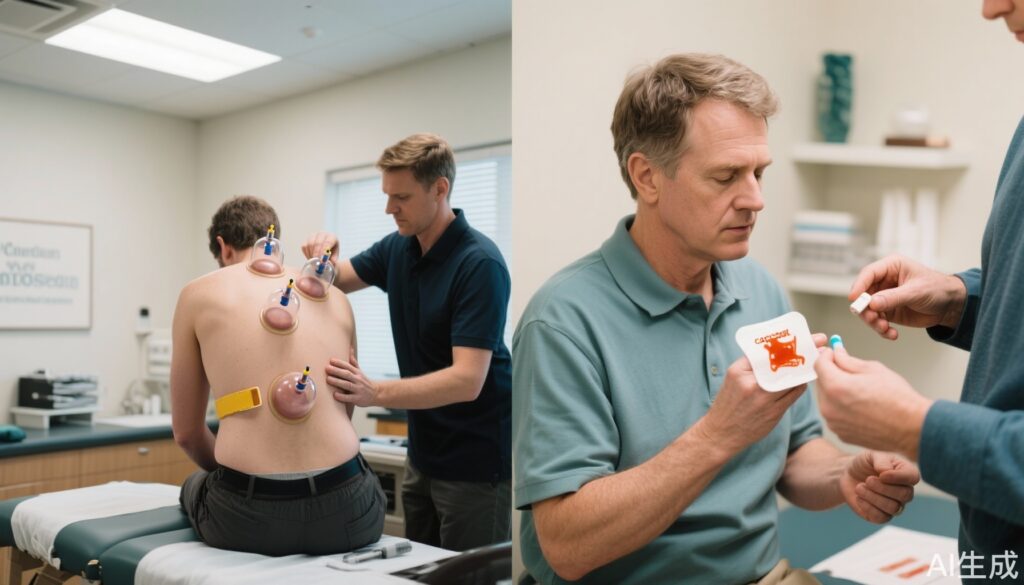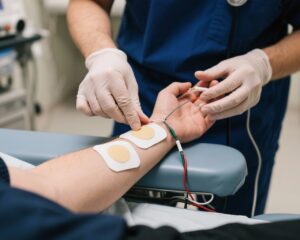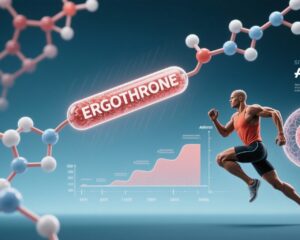Highlight
– Cupping and scraping therapy combined with medicated balm significantly outperformed NSAID plus capsaicin plaster in reducing pain within one week in CNLBP patients.
– Improvement was confirmed across multiple validated scales including the visual analogue scale (VAS), Japanese Orthopedic Association low-back pain scale (JOA), and traditional Chinese medicine syndrome integral scale (TCMS).
– Multivariate analysis indicated patient factors like marital status, age, smoking habits, and BMI influenced treatment response, highlighting patient heterogeneity.
– No adverse events were reported, suggesting a favorable safety profile for the TCM plus physiotherapy approach.
Study Background and Disease Burden
Chronic nonspecific low-back pain (CNLBP) is a prevalent musculoskeletal condition, contributing significantly to persistent disability and escalating healthcare costs worldwide. Epidemiological data show an increasing incidence among young and middle-aged adults who demand rapid functional recovery to maintain social and occupational productivity. Contemporary clinical guidelines have increasingly cautioned against reliance on pharmacological interventions—particularly NSAIDs—due to variable efficacy and risk of adverse effects, recommending nonpharmacological and integrative approaches as first-line treatments. Traditional Chinese Medicine (TCM) modalities such as cupping and scraping therapy, combined with medicated balms, have gained attention for their potential analgesic and functional benefits, yet rigorous comparative evidence remains sparse.
Study Design
This prospective, multicenter randomized clinical trial enrolled 156 adult patients diagnosed with CNLBP between January and December 2022. Participants were randomized into two parallel groups:
– Control group: Received sustained-release oral diclofenac sodium (an NSAID) daily for seven days, alongside external application of a capsaicin plaster.
– Test group: Treated with cupping and scraping therapy using a standardized medical device and a specified medicated balm.
Primary outcome was assessed using the visual analogue scale (VAS) for pain intensity. Secondary outcomes incorporated the Japanese Orthopedic Association low-back pain scale (JOA), reflecting functional status, and the traditional Chinese medicine syndrome integral scale (TCMS), assessing symptom complex severity tailored to TCM diagnostic frameworks. Both baseline and postintervention outcomes were measured after the one-week treatment period.
Key Findings
Significant improvements across all measured outcomes were observed postintervention in both groups (P < 0.001). Crucially, the test group demonstrated a markedly superior therapeutic effect compared to control, with:
– Greater reductions in VAS scores indicating more effective pain alleviation.
– Higher JOA scores reflecting enhanced functional recovery.
– Lower TCMS scores signaling better control of TCM syndrome-related symptoms.
These differences were statistically robust (P < 0.001). Multivariate linear regression analysis further elucidated that pain outcomes (VAS scores) were influenced by demographic and lifestyle factors including marital status, age, smoking status, and body mass index (BMI), suggesting that these variables may modulate therapeutic responsiveness.
Safety-wise, the absence of adverse reactions across both cohorts underscores the favorable tolerability of both treatment strategies, with particular reassurance regarding the use of TCM-based and physical therapy approaches in this patient population.
Expert Commentary
The study provides compelling evidence supporting the integration of traditional cupping and scraping therapies with medicated balms in managing CNLBP. This complements emerging guideline trends advocating reduced pharmacologic reliance and increased use of nonpharmacological interventions. The superior short-term pain relief and functional improvement observed are clinically meaningful and align with plausible biological mechanisms such as improved local circulation, neuromodulation of pain pathways, and anti-inflammatory effects intrinsic to these modalities.
However, limitations include the short duration of follow-up, limiting inference on long-term efficacy and durability of effects. Additionally, the subjective nature of outcome measures and heterogeneity in patients’ baseline characteristics may affect generalizability. Future studies should aim for longer follow-up periods, larger cohorts, and inclusion of objective functional and imaging biomarkers.
Conclusion
This multicenter randomized clinical trial demonstrates that cupping and scraping therapy combined with medicated balm provides superior short-term benefits over standard NSAID plus capsaicin plaster therapy for patients with chronic nonspecific low-back pain. The combined TCM and physiotherapy approach resulted in greater pain reduction, symptom improvement, and enhanced quality of life without adverse events. These findings support consideration of integrative treatment strategies as part of a multimodal approach to CNLBP management, particularly for patients seeking alternatives to pharmacotherapy. Further rigorous, long-term studies are warranted to confirm sustained benefits and optimize patient selection.
References
1. He JY, Tu XY, Yin ZF, Mu H, Luo MJ, Chen XY, Cai WB, Zhao X, Peng C, Fang FF, Lü C, Li B. Short-term effects of cupping and scraping therapy for chronic nonspecific low-back pain: A prospective, multicenter randomized trial. J Integr Med. 2024 Jan;22(1):39-45. doi: 10.1016/j.joim.2024.01.004. Epub 2024 Jan 24. PMID: 38311541.
2. Qaseem A, Wilt TJ, McLean RM, Forciea MA; Clinical Guidelines Committee of the American College of Physicians. Noninvasive Treatments for Acute, Subacute, and Chronic Low Back Pain: A Clinical Practice Guideline from the American College of Physicians. Ann Intern Med. 2017 Apr 4;166(7):514-530. doi: 10.7326/M16-2367.
3. Zhang Q, Yue J, Lu Y, Sun Z, Wang Y. Cupping therapy for chronic pain: systematic review and meta-analysis. Medicine (Baltimore). 2017 Dec;96(24):e7352. doi: 10.1097/MD.0000000000007352.
4. Kwon YD, Kim JH, Lee JH, et al. Effectiveness and Safety of Traditional Chinese Medicine for Low Back Pain: A Systematic Review and Meta-Analysis of Randomized Controlled Trials. Evid Based Complement Alternat Med. 2021;2021:6633144. doi: 10.1155/2021/6633144.


